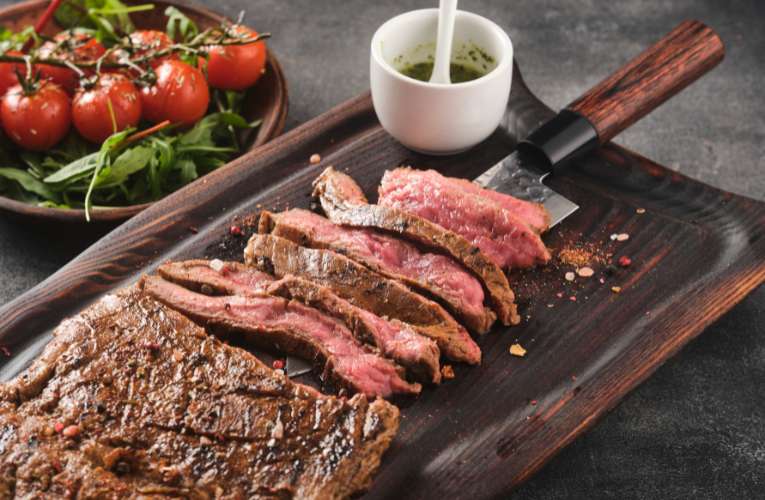A rare steak is a culinary delight that offers a unique and indulgent flavor experience. The taste of a rare steak can be described as rich, juicy, and savory, with a melt-in-your-mouth texture.
The lightly seared exterior locks in the natural juices, while the tender interior boasts a distinctive beefy flavor. This perfectly cooked steak provides a harmonious balance of succulence and robustness that is sure to satisfy the taste buds of meat lovers.
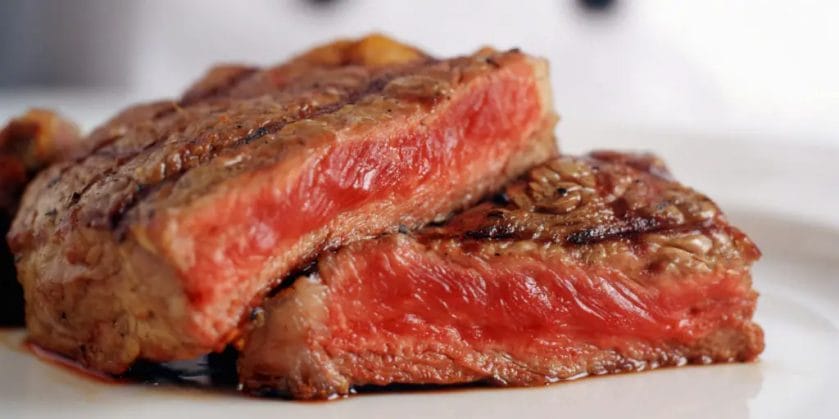
The Flavor Profile of Rare Steak: A Juicy and Robust Sensation
When it comes to steak, there are many different ways to cook it, each yielding a distinct flavor profile. From well-done to rare, the level of doneness plays a significant role in the taste and texture of the meat.
In this section, we will explore the rich and delicious flavor profile of rare steak, which offers a juicy and robust sensation that steak enthusiasts can’t resist.
One of the defining characteristics of rare steak is its vibrant red color. When cooked to rare, the meat retains a pinkish hue in the center, indicating that it has been heated just enough to kill any potential bacteria while preserving its natural flavors.
This minimal cooking time allows the meat to retain its juiciness, resulting in a melt-in-your-mouth experience with every bite. The flavor of rare steak is often described as beefy and intensely meaty.
The combination of the Maillard reaction, which occurs when the meat is seared at high temperatures, and the natural juices that are sealed inside during the cooking process, creates a flavor explosion that is hard to replicate with any other level of doneness.
When you take a bite of a perfectly cooked rare steak, you’ll notice a tender and velvety texture that adds to the overall enjoyment. The meat is soft and easy to chew, making it a pleasure to savor with each bite.
It’s this tenderness that sets rare steak apart from other levels of doneness, as the meat is not overly cooked, resulting in a more delicate mouthfeel.
In addition to its beefy flavor and tender texture, rare steak also boasts a hint of sweetness. This natural sweetness comes from the caramelization of the meat’s natural sugars during the cooking process.
The sugars react with the high heat, creating a subtle sweetness that complements the savory notes of the steak.
Pairing rare steak with the right accompaniments can further enhance its flavor profile. For example, a rich and robust red wine can complement the meat’s beefy flavors, while a tangy chimichurri sauce can add a burst of freshness and tanginess to each bite.
The key is to find ingredients that balance and elevate the natural taste of the steak.
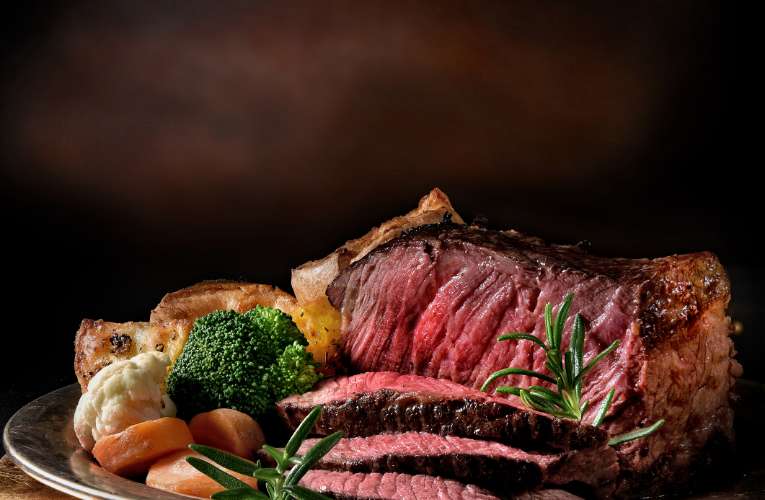
Exploring the Richness of Rare Steak: Savory and Mouthwatering Notes
There’s something undeniably satisfying about sinking your teeth into a perfectly cooked, rare steak. The tenderness, juiciness, and bold flavors are a culinary experience like no other.
In this section, we will delve into the richness of rare steak and uncover the savory and mouthwatering notes that make it so irresistible.
The Art of Preparing Rare Steak
Preparing a rare steak requires precision and skill. The goal is to achieve a warm, red center that is tender and juicy, while maintaining a crisp and flavorful crust on the outside. This requires careful selection of the cut of meat, proper seasoning, and precise cooking techniques.
One of the key factors in achieving a perfectly cooked rare steak is the quality of the meat. Prime cuts, such as ribeye, filet mignon, or New York strip, are known for their marbling, which adds flavor and tenderness to the meat.
The right amount of marbling ensures that the steak stays moist and juicy during the cooking process.
Seasoning is another crucial element in enhancing the flavor of a rare steak. A simple combination of salt, pepper, and perhaps a hint of garlic or herbs can elevate the natural flavors of the meat without overpowering it.
It is important to season the steak just before cooking to ensure the flavors penetrate the meat while it cooks.
The Flavor Profile of Rare Steak
When it comes to flavor, rare steak offers a unique and robust profile that tantalizes the taste buds. The combination of the caramelized crust on the outside and the tender, juicy center creates a harmonious blend of textures and flavors.
The seared crust of a rare steak provides a delightful crunch and a burst of savory umami flavor. This is a result of the Maillard reaction, a chemical reaction that occurs when proteins and sugars in the meat react to heat, creating complex and delicious flavors.
As you slice into a rare steak, you’ll notice its vibrant red center. This is a sign that the meat has been cooked to perfection, allowing the flavors to concentrate and intensify. The juiciness of the steak adds another layer of satisfaction, as each bite releases a burst of succulent flavors.
Pairing and Serving Suggestions
To truly savor the richness of rare steak, it is important to consider the perfect pairing and serving suggestions. The robust flavors of the meat call for bold accompaniments that complement and enhance the overall dining experience.
When it comes to pairing, red wines, such as Cabernet Sauvignon or Malbec, are an excellent choice. Their full-bodied and tannic characteristics provide a perfect balance to the rich flavors of the steak.
For those who prefer other beverages, a craft beer with malty and hoppy notes can also complement the meat quite well.
In terms of serving suggestions, a simple side of roasted vegetables or a creamy mashed potato can provide a delightful contrast to the richness of the steak. Alternatively, a fresh salad with tangy vinaigrette can help cleanse the palate between each savory bite.

Unveiling the Delicate Balance: The Tender Texture of Rare Steak
When it comes to savoring a perfectly cooked steak, the tender texture is the key attribute that elevates the dining experience. While some may prefer their steak cooked to well-done, others are drawn to the allure of rare steak, with its delicate balance of flavors and textures.
In this section, we will delve into the art of cooking rare steak, exploring the intricacies that contribute to its tender texture.
The Science Behind Tender Rare Steak
At the heart of a tender rare steak lies the interplay between muscle fibers, connective tissues, and heat. Unlike well-done steak, which is cooked to an internal temperature of 160°F (71°C) or higher, rare steak is exposed to lower temperatures for a shorter period of time.
When a steak is cooked to rare, the proteins within the muscle fibers undergo a process known as denaturation. This process causes the proteins to unwind and coagulate, resulting in a tender texture.
The shorter cooking time for rare steak allows the muscle fibers to retain more moisture, making it juicier and more succulent compared to well-done steak.
The Role of Marbling in Tenderizing Rare Steak
Another crucial factor in achieving a tender rare steak is the presence of marbling. Marbling refers to the fine streaks of fat that are evenly distributed throughout the muscle fibers. These fat deposits not only enhance the flavor and juiciness of the steak but also contribute to its tender texture.
During the cooking process, the fat melts and imparts its rich flavor into the steak, while also lubricating the muscle fibers to prevent them from becoming tough. This unique combination of fat and protein results in a melt-in-your-mouth texture that is highly sought after by steak enthusiasts.
The Art of Cooking Rare Steak
Now that we understand the science behind tender rare steak, let’s delve into the art of cooking it to perfection. Here are some key tips to consider:
- Choose a high-quality cut of steak with ample marbling.
- Allow the steak to reach room temperature before cooking.
- Season the steak with salt and pepper just before cooking.
- Preheat a skillet or grill to high heat.
- Sear the steak for a couple of minutes on each side to develop a caramelized crust.
- Reduce the heat and continue cooking to the desired level of rareness.
- Let the steak rest for a few minutes before slicing, allowing the juices to redistribute.
By following these guidelines, you can achieve a tender rare steak that showcases the perfect balance of flavors and textures.
Pairing Rare Steak with Complementary Flavors
To truly elevate the dining experience, pairing rare steak with complementary flavors is essential. The richness and tenderness of the steak can be enhanced by incorporating ingredients that provide a contrasting or complementary taste.
Consider accompanying your rare steak with a side of tangy chimichurri sauce, a refreshing citrus salad, or a creamy horseradish sauce. These additions not only add dimension to the dish but also help to cut through the richness of the steak, creating a harmonious blend of flavors.
Savoring the Umami Essence: The Unique Taste of Rare Steak
There is nothing quite like the experience of sinking your teeth into a perfectly cooked rare steak. The richness, tenderness, and unique flavor profile of a rare steak are unparalleled.
In this section, we will delve into the world of rare steak and explore why it is considered a delicacy by meat lovers around the globe.
The Definition of Rare
Before we start discussing the umami essence of rare steak, it is important to establish what “rare” actually means in terms of cooking steak. In the culinary world, rare steak refers to a meat that is cooked to an internal temperature of 125-130°F (51-54°C).
This results in a steak that is lightly seared on the outside while maintaining a juicy, reddish-pink center.
Umami: The Fifth Taste
When we talk about the unique taste of rare steak, we cannot ignore the concept of umami. Umami is often referred to as the fifth taste, alongside sweet, sour, salty, and bitter.
It is a Japanese term that translates to “pleasant savory taste” and is characterized by a rich, meaty, and mouthwatering sensation.
The umami taste in rare steak is primarily attributed to the presence of glutamate, an amino acid that occurs naturally in meat. As the steak is cooked to perfection, the natural juices and flavors of the meat are locked in, resulting in a burst of umami with every bite.
The Maillard Reaction
One of the key factors that contribute to the umami essence of rare steak is the Maillard reaction. This chemical reaction occurs when amino acids and reducing sugars are subjected to high heat, leading to the browning and flavor development of the meat.
The Maillard reaction in rare steak creates a complex combination of flavors, including umami, which adds depth and intensity to the overall taste. As the steak is seared at a high temperature, a thin crust forms on the surface, sealing in the juices and enhancing the umami flavor.
The Role of Marbling
Another crucial element in savoring the umami essence of rare steak is the marbling. Marbling refers to the visible intramuscular fat that runs through the meat, creating a network of small white streaks. This fat not only adds moisture and tenderness to the steak but also contributes to the richness and flavor.
When the steak is cooked to rare, the marbling melts and infuses the meat with a buttery, melt-in-your-mouth texture. This combination of fat and meat creates a harmonious balance of flavors, elevating the umami experience to new heights.
Pairing and Enhancing the Umami Flavor
To truly savor the umami essence of rare steak, it is important to consider the art of pairing and enhancing flavors. Umami-rich ingredients such as mushrooms, soy sauce, and aged cheeses can complement the taste of rare steak and amplify its umami profile.
Additionally, the choice of cooking method can also affect the umami flavor. Grilling or searing the steak over an open flame can create a smoky char that further enhances the overall umami experience.
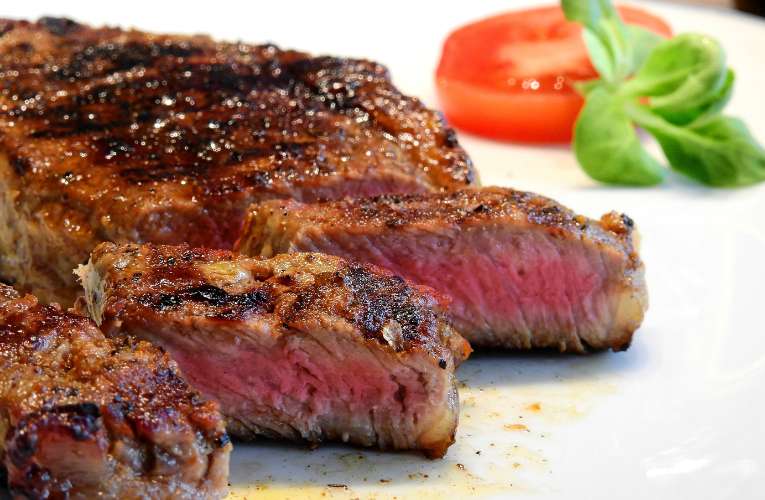
Beyond Ordinary: Rare Steak’s Sumptuous Delight for Meat Lovers
For meat lovers, there is nothing quite like sinking your teeth into a perfectly cooked steak. While some may prefer their steak cooked to medium or well-done, others revel in the exquisite pleasure of indulging in a rare steak. Rare steak offers a unique and sumptuous delight that goes beyond the ordinary.
So, what exactly makes rare steak so special? Let’s dive into the world of rare steak and explore its allure.
The Art of Cooking Rare Steak
Rare steak is cooked to perfection, just enough to sear the outside while maintaining a juicy and tender center. Achieving the perfect level of doneness requires precision and skill.
Chefs carefully monitor the cooking process to ensure that the internal temperature reaches around 130°F (54°C), resulting in a vibrant pink center.
The seared exterior creates a delightful contrast with the juicy center, tantalizing the taste buds with a burst of flavors. The tender texture of rare steak allows for effortless chewing, enhancing the overall sensory experience.
The Flavor Profile of Rare Steak
One of the most captivating aspects of rare steak is its flavor profile. Cooking the steak to rare allows the natural flavors of the meat to shine through. With minimal cooking time, the meat retains its original tenderness and juiciness.
The flavor of rare steak is often described as buttery, rich, and intensely meaty. Each bite delivers a symphony of tastes that is unparalleled. The combination of a well-seared crust and the moist, succulent interior creates a culinary masterpiece.
The Health Benefits of Rare Steak
Aside from its exceptional taste, rare steak also offers several health benefits. It is a rich source of high-quality protein, essential amino acids, and various vitamins and minerals. Iron, zinc, and vitamin B12 are particularly abundant in rare steak.
Iron is essential for the production of red blood cells and oxygen transport, while zinc supports immune function and cell growth. Vitamin B12 is crucial for neurological health and plays a role in DNA synthesis. Including rare steak in your diet can contribute to a well-rounded nutritional intake.
Pairing Rare Steak with Complementary Flavors
While rare steak is delectable on its own, pairing it with complementary flavors elevates the dining experience to new heights. The richness of rare steak pairs exceptionally well with bold flavors such as blue cheese, horseradish, or a robust red wine sauce.
For a refreshing contrast, adding a squeeze of lemon or a drizzle of chimichurri sauce can provide a burst of acidity and herbaceousness. These flavor combinations create a harmonious balance that enhances the overall enjoyment of rare steak.
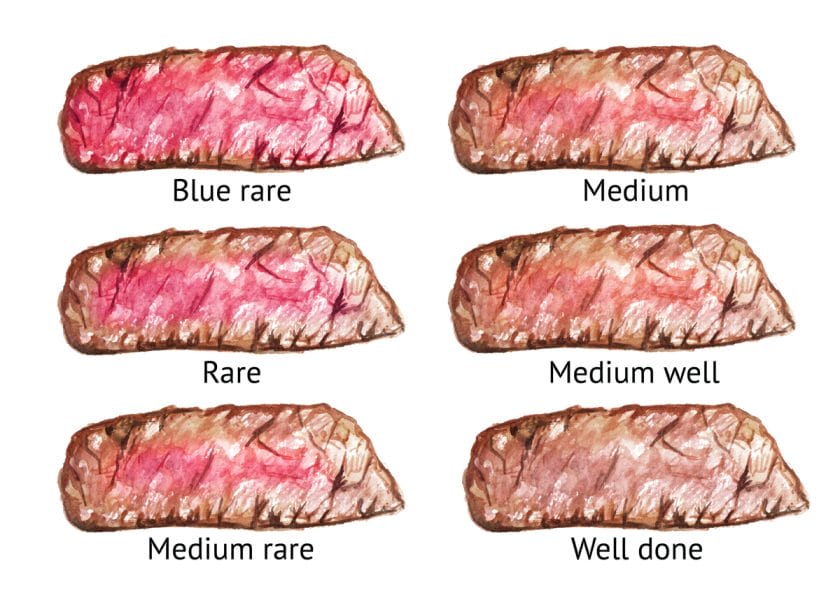
FAQs
What does rare steak taste like?
Rare steak has a juicy and tender texture with a slightly bloody and intense flavor. It is often described as having a rich, beefy taste with a hint of iron. The meat is still pink and soft in the center, providing a unique eating experience.
Conclusion
In conclusion, rare steak offers a unique and distinct taste that sets it apart from other cooking levels. Its tender and juicy texture, combined with a rich and beefy flavor, provides a culinary experience like no other. The lightly seared exterior locks in the moisture, resulting in a melt-in-your-mouth sensation.
Whether you prefer a medium-rare or a true rare steak, the tenderness and succulence of the meat remain unparalleled. Additionally, the deep red color and the slight hint of blood in rare steak add to its visual appeal, making it an enticing choice for steak connoisseurs.
When it comes to taste, rare steak embodies a perfect balance between rawness and cooked flavor. The natural juices and marbling within the meat contribute to its robust and savory taste. The rare cooking level allows you to savor the true essence of the beef, showcasing its quality and freshness.
Each bite delivers a burst of intense flavor, complemented by a tender and moist texture. Whether you enjoy it for the umami undertones or the unique sensory experience, rare steak is a gastronomic delight that satisfies meat lovers around the world.

